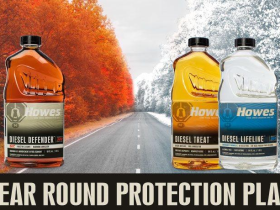By investing in the Prescott new tires, you are not just investing in new tires, but also in freshness. With each press of the brake, you increase the safety. New tires grip the road better. They minimize the stopping distances. The fact is a very big issue when you are driving over wet pavements, dry asphalt, and gravel-covered roads.
Why Stopping Distance Matters
Stopping distance is referred to as the distance that the vehicle must cover before it has fully stopped its motion after the brakes have been used. It is determined by some factors such as:
- Speed of a vehicle at the time of braking
- Road conditions
- State of tires and depth of tire tread.
- Brake system performance
- Vehicle weight and load
Despite the great state of your braking system, the question of worn-out tires can easily exaggerate the distance needed to bring it to a stop. This may determine between avoiding a collision and being part of one.
How New Tires Improve Stopping Power
New tires have multiple advantages that, directly, cut off stopping distances:
· Stronger Traction
New tread tires hold any road better than old ones. This guarantees the greatest phenomena of contact with the road surface.
· Effective Water Evacuation
The deeper grooves are used to move water out, decreasing the chances of hydroplaning on wet roads.
· Uniform Contact Patch
New tires spread out pressure evenly and thus offer the same kind of performance during hard braking.
· Better Response to Pressure
Old tires are known to air faster or flex disproportionately. New tires contain pressure and react in the same manner, particularly in the event of sudden halting.
These enhancements assist in reducing several feet when braking their vehicles, and these might be important during emergencies.
The Science Behind Stopping Distances
According to automobile safety tests, cars fitted with new tires have the capability of stopping a maximum distance of 20% more than vehicles with worn tires. There is an even greater difference on wet or oily roads. A case in point is that a vehicle that would cover a short distance of 60 mph would come to a halt a few lengths earlier with fresh tires. Accidents can be averted and passengers can be safeguarded using that margin of safety.
Choosing the Right Tires
Not every tire is created in the same way. Braking distance is also influenced by the kind of tire you take. Tires designed to work in all seasons bring good results. Performance tires have a better grip at higher velocities. Winter tires are better in performance on snow and ice.
When searching for new Tires near Prescott, you can find several local service providers who can suggest the best to use depending on your driving requirements. Visiting a reliable dealership or tire shop would make sure that tires are installed correctly and it is maintained so that they provide long-term safety.
Maintaining Tire Safety
New tires may require maintenance as well, in order to keep working. Even the best way to practice healthy distancing is:
- Check tire pressure at least once a month.
- Turn tires approximately 5,000- 7,000 miles to wear them evenly.
- Have wheel alignments done if you find your tire treads to be uneven.
- When there are fewer than 2 /32 inch treads, replace tires.
Final Thoughts
Added on top of the purchase, new tires represent a safety investment. They offer higher levels of traction, stronger braking, and shorter distances to braking. Drivers who install new tires may be assured that they are better equipped to handle stops and other unforeseen road accidents. Choosing the appropriate tires and caring about them will save your life as well as the lives of your passengers and all those who are on the road.







